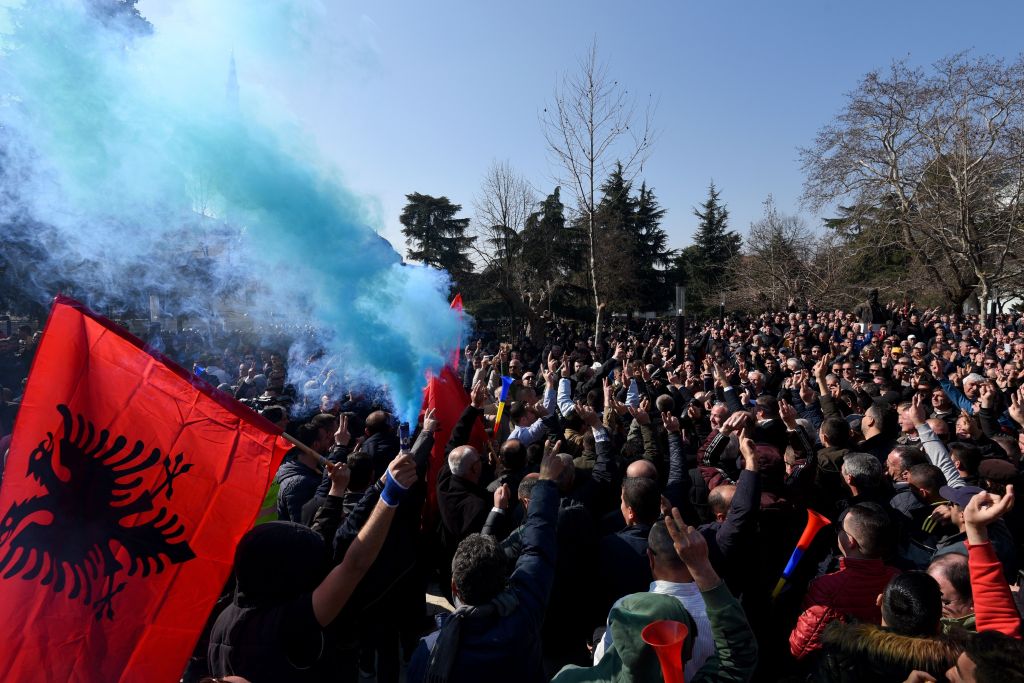A few days ago, VICE News posted photos from the world’s largest maritime exercise, RIMPAC 14.
RIMPAC — the Rim of the Pacific Exercise — has involved military representatives and units from 23 nations who have come together over the last month for a swath of different training and liaison activities. While the vast majority of RIMPAC is naval procedure, part of the naval portfolio includes amphibious operations. And if there are amphibious operations, then it means there are going to be a few ground pounders running about, either doing or getting on their way to do decidedly terrestrial things.
Videos by VICE
It may be a little bit counterintuitive, but no navy can really escape the fact that humans are not aquatic creatures, so navies always retain some sliver of a relationship to ground forces, if nothing else because they must eventually dock. However, the reverse isn’t always true — people are fairly well adapted to walking around and inhabiting the solid ground beneath them, and don’t necessarily need to engage in maritime activities to live or be relevant.
The practical consequence is that ground forces contingent at a naval exercise isn’t necessarily gratuitous or remarkably unusual, but a naval presence at a ground exercise is purely optional.

A member of the Japan Ground Self-Defense Force during a training exercise at RIMPAC 14. All photos by Jake Burghart
In the final amphibious landing exercise, the first ground forces to hit the beach were commandos from the Japan Ground Self Defense Force (read, Japanese Army). The commandos came ashore immediately following theoretical strikes on the beach from fixed-wing aircraft and a run from US Marine Corps attack helicopters.

An overflight from a MH-53, after dropping a Japanese reconnaissance element off shore.
In this exercise, the Japanese commandos were dropped into the sea, along with their boats, from MH-53 helicopters hovering just a few feet over the water. Inserting a force into the water from the air is relatively uncommon, at least compared to other shifts between operational environments, such as air assaults, beach landings, and so on. This kind of insertion is mostly limited to small, mobile units such as reconnaissance, commandos, or special forces.

An Australian soldier on the lookout for any opposing forces, just seconds after the assault from his AAV.
Following the reconnaissance and airstrikes, the first assault wave hits the beach in the Amphibious Assault Vehicle (AAV) shown in the background. These vehicles are not particularly heavily armed or armored, trades necessary to make them sufficiently buoyant to be an effective amphibious means of getting troops onto land. They can carry up to 25 armed marines to shore, where they disembark, engage any forces present, and establish a first, tentative perimeter.

An Australian soldier gives information to personnel who have just arrived in the second wave.
The Australian soldier shown above is relaying information to Australian and US personnel freshly arrived in the second assault. Each wave brings more infantry to the beach, supported by their AAVs.
Additional pushes continue further inland to establish a larger perimeter and bring more territory under their control. However, this beachhead is vulnerable to determined counterattack until heavier vehicles, such as tanks and artillery, can be moved ashore to support forces holding the area.

Tongan infantry working through the course at a US urban warfare training facility.
Once a beachhead has been secured, forces can move onshore en masse, allowing for the start of more traditional ground force warfighting activities, such as fighting in cities (known in US militaryspeak as Military Operations in Urban Terrain or MOUT).
While RIMPAC did involve some ground forces, as the main focus of the exercise is naval, most of these exercises were relatively restrained and focused heavily on practicing multilateral operations, rather than simulating major combat operations.
Follow Ryan Faith on Twitter: @Operation_Ryan



